Funding Awarded for Student Solutions to Real-world Problems
Tech Launch Arizona’s second Student Innovation Challenge has selected five student teams for funding to prototype inventions for commercialization.
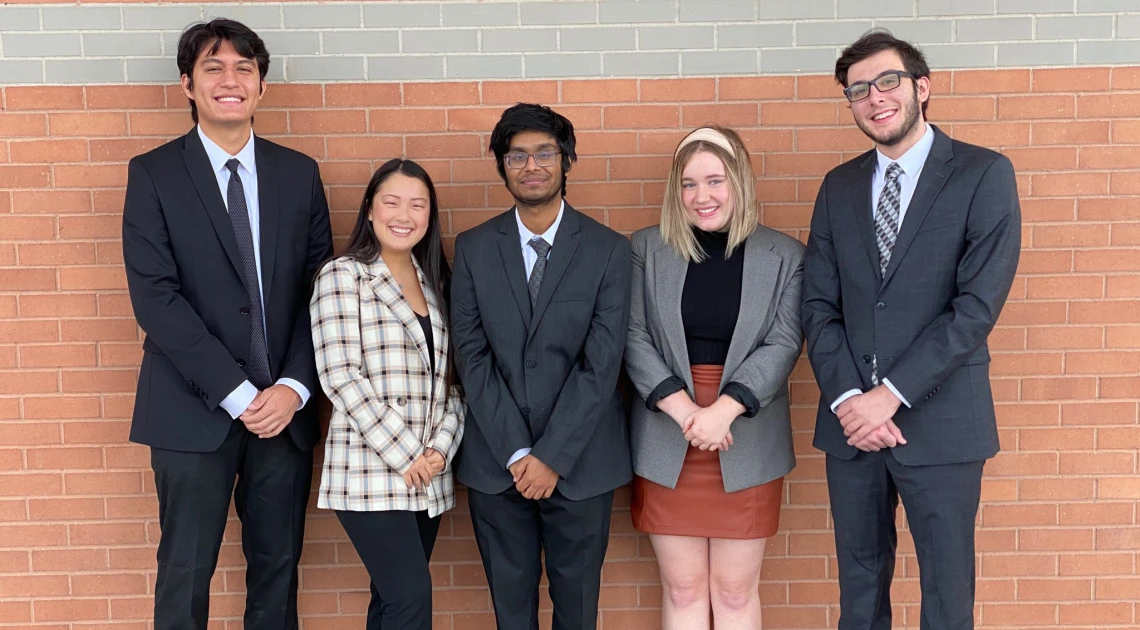
Eller team developing a gaming headband for the hearing-impaired. From the left: Max Santamaria, Hannah Simons, Vinith Nair, Lily Andress, and Mark Fariello (Not pictured: Taylor Reusser).
Courtesy of Max Santamaria
Updated May 12, 2021
TUCSON, Ariz. – Tech Launch Arizona (TLA) has awarded funding to five University of Arizona student teams to develop inventions with the goal of bringing them to the public as impactful products to benefit society. Through its second Student Innovation Challenge, TLA is continuing its series of competitions to engage students in innovation and commercialization.
“We’re giving students the chance to see their innovative ideas become reality,” said Rakhi Gibbons, director of licensing for TLA. “But in a much bigger sense, we’re introducing them to the innovation and entrepreneurship ecosystem, and helping them see if their passions can have impact on the world."
These projects give students the chance to experience entrepreneurship in a safe way, and even see a future that they might not otherwise pursue due to a lack of resources and a structure to help them direct their energies.
The panel of judges included both TLA personnel and external commercialization expertise, including recently retired vice president and general manager of GE Healthcare Charlene Grabowski and long-time serial entrepreneur and author Allen Freed, both of whom also serve as Commercialization Partners, advising UArizona academic inventors and startups.
“How do you make a decision when the ideas are not only innovative but many if not all were focused on social issues and addressed needs in our own community?” said Grabowski. “My hats off to all participants and I encourage them to keep going, make a plan and follow their dreams.”
Of the 26 applications received, the panel selected five for funding, awarding a total of approximately $40,000, which was distributed amongst the teams to develop their ideas into prototypes.
Making Waves in Tissue Culture
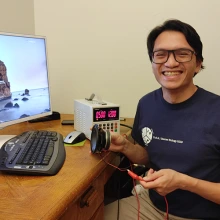
Jack Tran
We’ve all seen how loud sounds can create ripples on a liquid surface. Jack Tran, a student in cellular and molecular medicine, asked the question, what if we could use that effect to create better tissue culture surfaces in the lab?
Such cultures are traditionally done on flat surfaces, such as those in petri dishes. But tissues grow in three dimensions. While 3-D molds are available for this purpose, in his application, Tran proposed the creation of a novel platform that uses acoustics to tune these gel-based growth platforms to provide a textured environment where cells can grow and propagate.
With the funding TLA has awarded him for this project, he plans to acquire the raw materials and then use sound waves to create these 3-D surfaces in gels, and work towards developing a method to reproduce them efficiently and economically.
“It would be wonderful to see the discovery of new medicines because our invention allows human cells, grown in-vitro, to behave the same way they do in our body,” said Tran. “My greatest hope is that the biological and health sciences community will be able to use our invention to discover science in a way where traditional methods have limited our progress.”
All the Better to Sssssee You With
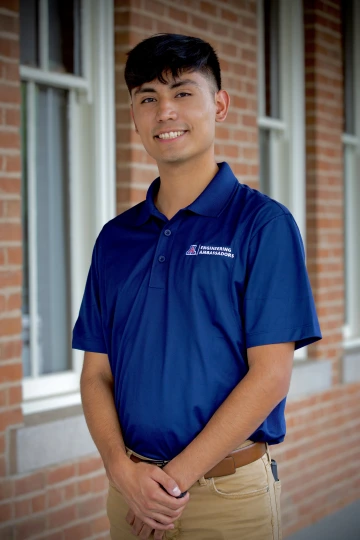
Antonio Tavera-Reyes
This past summer, Antonio Tavera-Reyes, majoring in computer science and information science and technology, had a harrowing yet common Sonoran Desert experience. He went outside to his recycling bin one night using his cell phone flashlight to see.
“When I was at my outdoor recycling bin, I started dumping the material inside,” he recalled. “A soda can fell out to the ground and as I reached to grab it, I noticed there was a Western Diamondback rattlesnake inches from my foot.”
As his heart rate returned to normal, he thought of several family members who work outdoors in landscaping. Doing a little more research, he then learned that while Latinos represent 13 percent of the total U.S. workforce, when it comes to the landscaping and lawn care industry, that ratio slithers up to 35 percent of workers. In addition, according to the CDC, venomous snakes are a neglected hazard for outdoor workers.
Tavera-Reyes saw this as a problem and an opportunity.
“I had the idea to create a mobile application which could be used to monitor and detect in real time, the presence of snakes,” he wrote. “I began this idea with a preliminary project by modeling and then developing the software with machine learning using TensorFlow API, Google Colab notebooks, GDrive, 500 image snake data set, and Python.”
He has already begun the work, and with this funding, he plans to create a fully working model of the mobile application.
“With the amazing opportunity that the TLA challenge provides in resources, and support, my real-time snake detecting mobile application invention can now be a reality,” Tavera-Reyes said. “It would be so gratifying to be able to distribute this software to communities around the world that face struggles with venomous snakes, manufacturing antivenom, and sparse medical accessibilities.”
Get Your Head in the Game
An innovative team of students from the Eller College of Management – all gamers – knew that making games accessible for the deaf and hard of hearing is a challenge that developers and the gaming industry as a whole face. That team consisted of entrepreneurship students Max Santamaria, Hannah Simons, Mark Fariello, Vinith Nair, and Lily Andress.
“Gamers with disabilities are overlooked in the gaming industry in areas like game and controller design,” they wrote in their application, noting that deaf and hard of hearing gamers are at a severe disadvantage. “Our solution allows people with hearing disabilities to play competitive games without any disadvantages.”
The team proposed to develop a lightweight headband with 360-degree vibration capabilities that allow users to feel which direction the noise comes from. The prototype they plan to build will combine a lightweight headband with sensors and vibrators – and the software to integrate it all – to allow gamers to “feel” the directional source of sound cues, such as voices or gunshots.
“We hope that our invention allows the gaming industry to be a more inclusive environment,” said Santamaria.”We hope to see our product being used by video game enthusiasts across the industry and become a new tool that any gamer can rely on to create a better experience.”
Bringing the Outside In
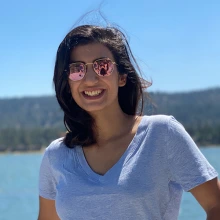
Sara Ghaemi
In her application, Sara Ghaemi, a graduate student in the College of Architecture, Planning and Landscape Architecture, proposed building an algae-based biosystem capable of heating/cooling and purifying indoor air. Her idea for an “algae heat-sink and air purifier” proposes creating systems to grow algae that can be integrated into indoor features like benches or other furniture.
In her proposal, she wrote that by introducing nature into the built environment, such a system can decrease the need for mechanical systems and lower a building's energy consumption. And in the bigger picture, it could help sequester carbon dioxide, helping to mitigate global warming.
“I have always cherished integrating biosystems and biomaterials into architecture and using them as a carbon dioxide sequestration remedy, along with deliberately modifying them to reduce our buildings' energy consumption,” she said. “I hope this innovation is a solid start to bring back nature into our daily lives and rethink the air that we breathe, all resulting in producing algae – a primary source of many products we use in our daily lives.”
Water and Power Where They’re Needed Most
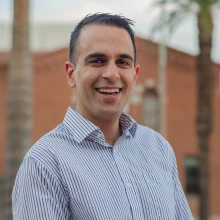
Abolhassan Mohammadi Fathabd
In places like the Navajo Nation in northern Arizona, access to clean water and electricity represent an ongoing community challenge for residents. In their proposal, a multidisciplinary team of graduate students proposed developing a household system that simultaneously produces renewable energy and purifies water, all leveraging sustainable, low-maintenance technologies. The group included Abolhassan Mohammadi Fathabd who is studying systems and industrial engineering, Christopher Yazzie who is studying environmental engineering, and Georgina Torrandell Haro, who is working towards her graduate degree in medical pharmacology and studying at the Eller College of Management. Fathabd and Yazzie are trainees with the Indige-FEWS program in the Institute for Energy Solutions where they were introduced to similar projects.
For those families with poor access to such resources, a system like this could be invaluable.
In their proposal, the team proposed creating a unit that consists of a solar panel, a battery, a pump and a water nanofiltration membrane. Based on their calculations, they estimate that they can develop a system that produces and stores between 1 and 5 kilowatts and purifies between 25 and 150 gallons of water daily.
“The short-term hope is to improve the quality of life of thousands of households in Navajo Nation which do not have access to either clean water or electricity,” said Fathabd. “My long-term vision for our project is to produce units that can be installed in any remote location around the globe, and perhaps someday on a moon base.”
“The range of proposals we got was just fantastic,” said Gibbons. “We’re going to continue to hold these competitions and look forward to working with students at all levels to bring these kinds of innovative solutions to the world.”

